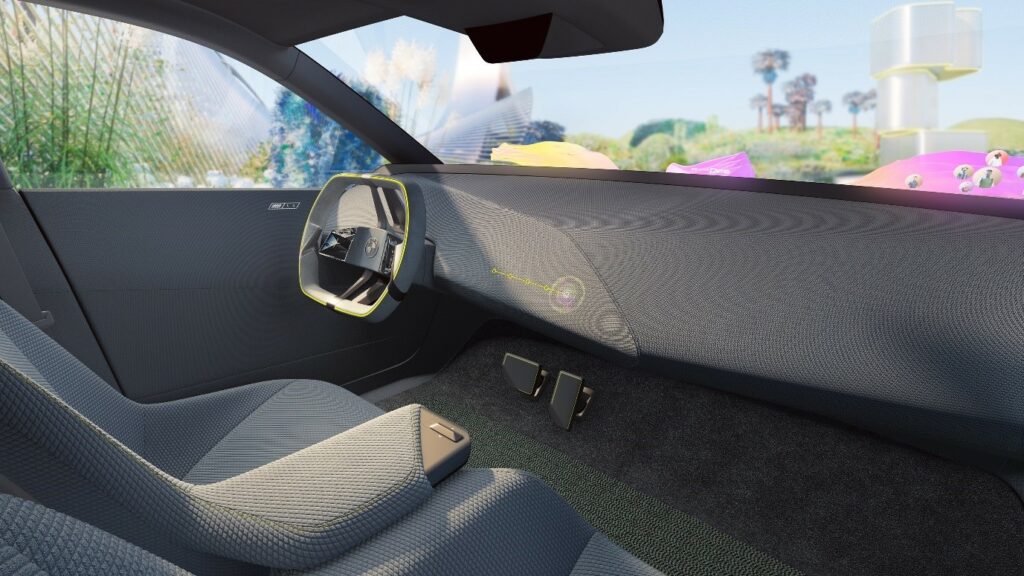What did CES 2023 reveal about the future of automotive screens?
09 January 2023

Among the latest drivetrain and autonomous developments, this year’s Consumer Electronics Show (CES) featured groundbreaking vehicle-interior technology. Autovista24 deputy editor Tom Geggus explores the showstoppers at CES 2023.
Flying cars, autonomous systems, and electric vehicles (EVs) are known for claiming the limelight at the electronics show. But at this year’s CES, carmakers, suppliers and startups drew back the covers on some interior innovations.
Opening the show, vice president of research for the Consumer Technology Association, Steve Koenig, highlighted the major trends different industries could expect. For the automotive sector, this meant the advancement of electrification, autonomous applications, and the transformation of the in-vehicle experience. This last trend concerned the advance of entertainment, connectivity and what he called ‘screenification’.
Signs of ‘screenification’
The expansion and multiplication of screens inside cars will come as little surprise to many within the automotive industry. But CES 2023 highlighted just how far this trend is could extend. Volkswagen’s latest addition to its electric range, the ID.7, features a 38cm screen and illuminated touch sliders.
Peugeot’s Inception concept took a new angle with the installation of a screen into its Hypersquare control system. This human-machine interface (HMI) replaces the traditional steering wheel and displays control information on its tablet-like surface.

Pictograms for different features such as air conditioning, volume, and advanced driver-assistance systems (ADAS) are displayed on two side panels, located inside the circular recesses. This allows the driver to rely only on their thumbs, with no need to let go of the controls.
Elsewhere within the Stellantis stable, Ram took a more traditional approach to displays. The 1500 Revolution battery-electric vehicle (BEV) concept features a display made up of two screens. The lower unit has three different positions; minimal, extended and full-screen view. It can also be removed and used in different areas of the pickup truck.

Continental unveiled its ultrawide In2visible HMI. Measuring 1.29m in width, the surface comes with an integrated, haptically supported control panel. Optional dimming of individual areas means the interface can save power, improve readability and reduce distractions.
‘The curved ultrawide display creates a driving experience that users can fully immerse themselves in. The high intensity and quality radiate throughout the vehicle, transforming the car into a living room on wheels,’ said Philipp von Hirschheydt, head of the user experience business area at Continental. Volume production is planned for 2025.

Gaming on the go
One of the most prominent examples of screenification came from Afeela. The result of a collaboration between Sony and Honda, the new brand unveiled a prototype vehicle at CES 2023. A panoramic screen stretches from pillar to pillar at the front of the car, while passengers in the rear get to enjoy their own displays, with the potential to play games – a topic of great discussion.
Speaking at CES, Sony Honda Mobility’s representative director, chairman and CEO, Yasuhide Mizuno, unpacked the prototype’s entertainment offerings. ‘We aim to evolve mobility space into entertainment and emotional space, by seamlessly integrating real and virtual worlds, and exploring new entertainment possibilities through digital innovations such as the metaverse,’ Mizuno said.
A production model based on this prototype will enter production in the next few years. Pre-orders will begin in the first half of 2025, with sales kickstarting at the end of the same year. Deliveries in North America will begin in Spring 2026.
Nvidia revealed its cloud gaming service, GeForce Now, will be coming to cars. Using low-latency streaming technology, the system allows carmakers to offer a PC-gaming experience inside their vehicles.
Hyundai Motor Group (spanning Hyundai, Kia and Genesis), BYD and Polestar are all looking to offer the technology in their vehicles. ‘The ability to stream popular titles from gamers’ libraries along with dozens of free-to-play games will bring the in-vehicle infotainment experience to new heights,’ said Ali Kani, vice president of automotive at Nvidia.
Disappearing displays
However, not all carmakers committed themselves to screens, with some looking to make them disappear altogether. ‘Digital leadership in the car is not about who has the biggest screen, the highest processing power, or who writes the most lines of code,’ said BMW CEO, Oliver Zipse. ‘The only thing that really counts is what the user feels and experiences.’
The German brand did not take a new car to CES 2023, but a ‘companion’ concept called i Vision Dee (a digital emotional experience). Instead of filling the driver’s space with screens, BMW equipped head-up display (HUD) projections that can span the width of the windscreen.

Equipped with augmented reality functions, the windscreen removes the need for displays, instead supplying the driver with a slider to choose between five levels of digital input. This ranges from the most essential driving information – contained within a thin band at the bottom of the windshield – to a display taking up the entire screen. But consumers will not need to wait for the i Vision Dee to see this shift. Appearing in the carmaker’s Neue Klasse (new class), the next generation of BMW HUDs will hit the road as early as 2025.
Automotive supplier Harman also arrived in Las Vegas with new HUD technology. The Samsung subsidiary displayed its Ready Vision system, which displays turn-by-turn directions on the windscreen. Capable of 3D object detection, it can deliver non-intrusive collision alerts, blind-spot warnings, as well as lane-departure notifications and low-speed zone information.

‘This launch is a key component of Harman’s mission to enhance the safety of drivers, passengers and pedestrians, while cultivating transformative in-cabin experiences,’ said Armin Prommersberger, senior vice president of product management.
‘Ready Vision solves key industry challenges around driver safety by helping drivers better understand their surroundings and enabling an eyes-forward, focused journey. Our new product empowers the driver with the right information at the right time, even in the most unfamiliar driving scenarios, making their time on the road more intuitive and safe,’ he added.
So it appears cars could require fewer screens in the future, instead projecting essential information around the interior. But it will be down to passengers to decide how to utilise this technology, particularly if given the option to increase or decrease its presence.



